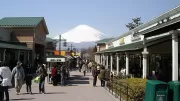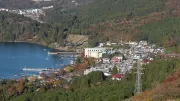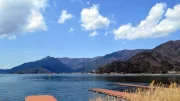The Fuji Five Lakes region (Fujigoko) is one of Japan’s most scenic and serene destinations, set at the northern base of Mount Fuji in Yamanashi Prefecture. As the name suggests, the area is home to five distinct lakes formed by ancient lava flows from Fuji’s eruptions: Lake Kawaguchiko, Lake Yamanakako, Lake Saiko, Lake Shojiko, and Lake Motosuko.
 Renowned for its breathtaking views of Mt. Fuji, outdoor activities, hot springs, and cultural sites, the region offers a quieter, more natural side of Japan—perfect for those looking to relax, hike, and connect with traditional landscapes.
Renowned for its breathtaking views of Mt. Fuji, outdoor activities, hot springs, and cultural sites, the region offers a quieter, more natural side of Japan—perfect for those looking to relax, hike, and connect with traditional landscapes.
The Five Lakes
Lake Kawaguchiko
The most accessible and developed of the five, Lake Kawaguchiko is the top choice for visitors. The town around the lake features hot spring resorts, museums, cafés, and the Kawaguchiko Music Forest. It’s also a gateway to the Mt. Fuji Panoramic Ropeway, which offers incredible views of Fuji and the lake below. This area is a great base for exploring the region.
Lake Yamanakako
Lake Yamanakako is the largest of the five lakes and popular with both domestic tourists and locals for cycling, boating, and fishing. With a long lakeside walking path, swan-shaped paddle boats, and beautiful seasonal flowers, it’s a relaxed, family-friendly location. The Mt. Fuji viewing spots here are particularly photogenic, especially in the early morning.
Lake Saiko
Less developed and more secluded, Lake Saiko appeals to nature lovers. Surrounded by forest, it’s ideal for camping, kayaking, and hiking. It’s also close to the Aokigahara Forest, often called the “Sea of Trees,” and Iyashi no Sato, a recreated traditional village showcasing thatched-roof houses and local crafts.
Lake Shojiko
The smallest of the five lakes, Lake Shojiko is also the quietest. It offers serene, uninterrupted views of Mt. Fuji, often reflected perfectly on its still waters. It’s ideal for visitors wanting a break from tourist crowds and is known as a good fishing and photography spot.
Lake Motosuko
Lake Motosuko is famous for its appearance on the back of the 1,000 yen note. It’s the deepest of the five lakes and known for its clear blue water. Activities here include canoeing, scuba diving, and hiking. The Fuji Shibazakura Festival, held nearby in spring, attracts thousands with vibrant pink moss phlox blooms set against the backdrop of Fuji.
Access and Transport
While the Fuji Five Lakes are accessible by bus or train from Tokyo, Lake Kawaguchiko is the easiest to reach and serves as the region’s transport hub. From Shinjuku, you can take the Fujikyuko Line or a direct highway bus. Once in the area, rental bikes, sightseeing buses, or taxis are common for getting between lakes and attractions.
Things to Do in the Area
- Climb or admire Mount Fuji – Even if you’re not hiking, the views are world-class.
- Boating, fishing, or paddleboarding – Available at several lakes.
- Soak in a hot spring (onsen) – Many accommodations include lakeside baths with Fuji views.
- Visit museums and nature parks – Including the Mt. Fuji World Heritage Centre and Kubota Itchiku Art Museum.
- Seasonal festivals – Spring flowers, summer fireworks, and autumn colours make year-round visits rewarding.
Best Time to Visit
- Spring (April–May) for cherry blossoms and shibazakura.
- Summer (June–August) for outdoor activities and cool mountain air.
- Autumn (October–November) for vibrant foliage.
- Winter (December–February) for the clearest Fuji views, especially early morning.
Whether you’re planning a day trip or a longer escape, the Fuji Five Lakes region offers a perfect mix of natural beauty, cultural experiences, and iconic landscapes. Its proximity to Mt. Fuji, combined with the tranquility of the lakes, makes it one of Japan’s most enchanting rural destinations.




